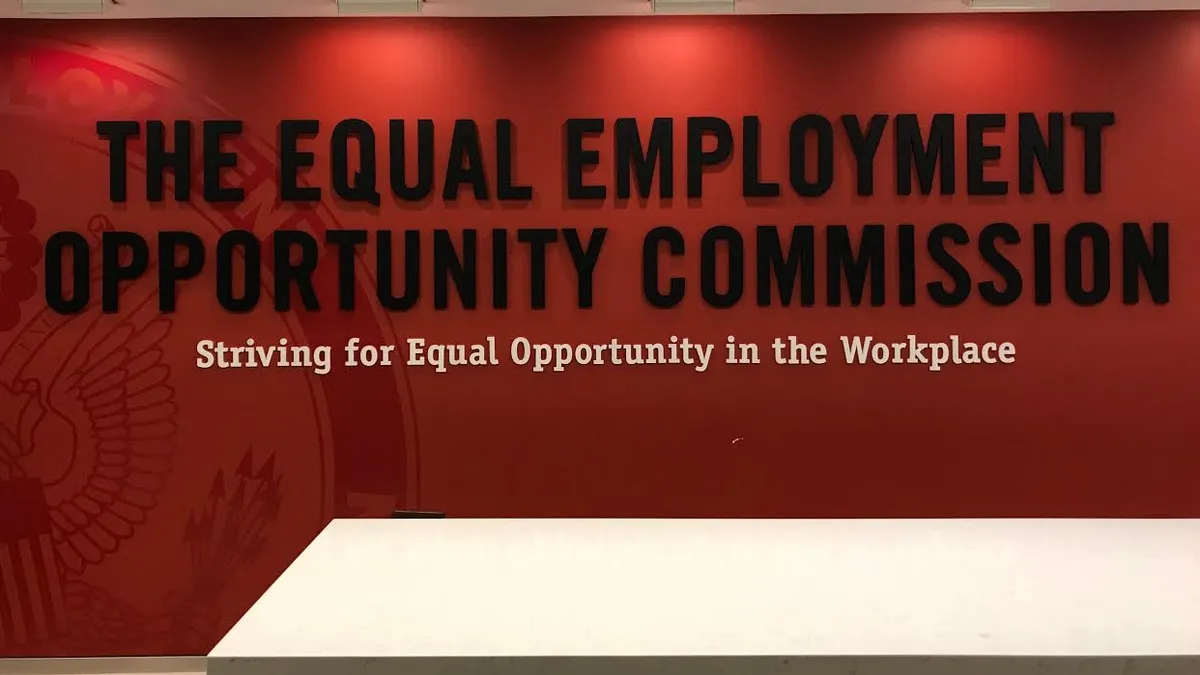Compensation data collection via the EEO-1 report is a potentially valuable resource for fighting pay discrimination, according to a report commissioned by the U.S. Equal Employment Opportunity Commission and released Thursday.
The research, conducted by the National Academies of Sciences, Engineering, and Medicine examined EEOC’s 2018 pay data collection and determined the data “may be used effectively,” according to EEOC.
The agency embraced the study and may be gearing up to resume collection of pay data, which it says can help it enforce federal laws prohibiting pay discrimination. EEOC has not committed to such an action, however.
“I will say this, from my own reading, that the data that the EEOC collects is unique and can be a useful tool for enforcing the employment discrimination laws,” EEOC Chair Charlotte Burrows said in a Thursday press conference on the report’s release. “But again, not going to get in front of whether and how we would put that to use.”
The agency unanimously voted to commission the study in 2020, following a rocky couple of years: The EEOC began collecting EEO-1 Component 2 pay data under the Obama administration in 2017, but the effort was later halted by the Trump administration, which cited the Paperwork Reduction Act. Although a judge eventually put the pay data collection requirements back into effect, EEOC in 2019 said it would not renew the requirements for the next cycle.
While the requirement was unpopular with many employment and business groups — including the U.S. Chamber of Commerce and the Society for Human Resource Management — EEOC has remained interested in potentially reviving it as a means of addressing pay discrimination. Early in her tenure, Burrows said pay equity would be “front and center” for the agency moving forward.
The National Academies’ 300-page report on Component 2 concluded that the pay data is a “potentially valuable resource,” noting that it is the “only federal data source for pay data and demographic characteristics collected at the employer level, which is helpful for enforcement efforts, for employer self-assessment, and for providing a broad description of pay practices.”
However, the report noted that “data must be complete and robust” to be useful, and that the panel of analysts found incomplete data. Only around two-thirds of eligible U.S. firms were asked for data for pay analysis, it noted, and more than one-third of data was found to be unreliable due to “extreme errors.”
The report also noted measurement concerns, including that the Component 2 measure of pay only partially reflects total compensation, that the pay bands were overly wide for detecting most pay differences and that the job categories used by EEOC were outdated and “encompass[ed] a wide range of job responsibilities and pay rates,” among other issues.
The report also took issue with the total exclusion of some categories — such as “persons age 40 and older, persons with disabilities, and veterans,” all of whom fall under EEOC’s scope of discrimination — as well as the inability to note identity elements like multi-racial identity or LGBTQ status (an issue HR Dive has touched on previously).
The National Academies outlined a number of short-term improvements that are “necessary” for good data collection, including combining Component 1 and Component 2 data collection instruments to reduce errors, ensuring data is “reviewed and cleaned,” and conducting a field test to “investigate issues of burden, data availability, and questionnaire design.” Revision of the data-collection approach would also improve data, the report found.
EEOC pointed to many of the positive findings from the study in its release, including the high rate of submissions from employers it asked to participate. It also noted that pay data would provide a more data-driven approach to investigation and resolution of discrimination charges, which would help identify systemic discrimination and analyze national, regional and industry-based pay gaps.
Individual commissioners have been split in their enthusiasm to pursue pay data collection again based on the report. EEOC Vice-Chair Jocelyn Samuels, a Democrat, said the report “makes clear that [employer pay data] is a crucial tool to combat discrimination” and that she looks forward to working with employers, commissioners and colleagues to determine “whether and how to collect pay data again.”
On the other side of the aisle, Republican Commissioner Keith Sonderling acknowledged the issue of pay discrimination but said the report “is not a carte blanche approval for the Commission to hastily conduct another pay data collection” and EEOC should seek “significant public input through formal rulemaking” before conducting another collection. Republican Commissioner Janet Dhillon echoed that sentiment.




















